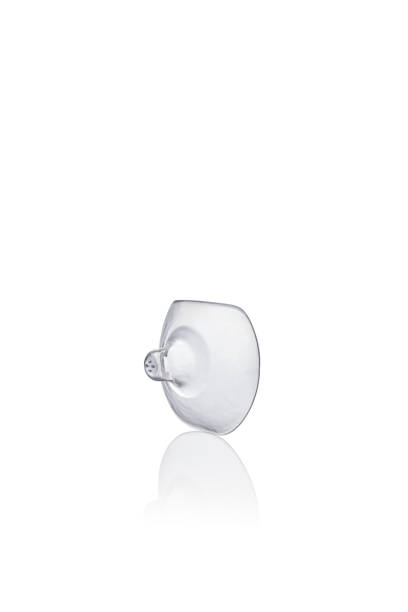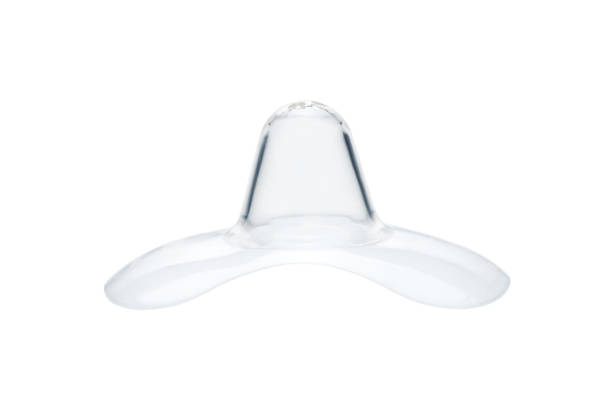Breastfeeding is a beautiful and natural process, but it can sometimes come with its challenges. For new mothers, especially, issues like nipple pain, latching problems, and nipple confusion can make nursing a stressful experience. One helpful solution that many mothers turn to is the nipple shield—a simple yet effective device designed to make breastfeeding easier and more comfortable for both the mother and baby.
In this article, we’ll explore what nipple shields are, why they’re used, how to properly use them, and how long you should keep using them to ensure a successful breastfeeding journey.
What Are Nipple Covers Used for Breastfeeding?

Before we dive into the specifics of how to use a nipple shield, let’s first understand what it is. A nipple shield is a soft, flexible silicone or rubber cover that is placed over the nipple during breastfeeding.
It typically has a small opening in the center to allow for the baby to latch and suckle, while also providing a protective layer for the mother’s sore or cracked nipples. Nipple shields come in various sizes to accommodate different nipple shapes and sizes, ensuring the best fit and comfort for each individual.
Why Use Nipple Shield?

There are several reasons why a mother might choose to use a nipple shield for breastfeeding. While the most common reason is to alleviate nipple pain, the device can also be helpful in addressing a variety of other challenges:
Improved Latch
One of the main benefits of using a nipple shield is its ability to help improve a baby’s latch. Some babies may struggle with latching properly due to various reasons, such as being premature, having a weak suck, or having difficulty coordinating their sucking reflex.
A nipple shield provides a larger surface area for the baby to latch onto, which can make the process easier for both the baby and the mother.
Sore or Cracked Nipples
Sore, cracked, or bleeding nipples are common complaints for new mothers, particularly in the early days of breastfeeding. The friction from the baby’s sucking can cause discomfort or even pain, making breastfeeding a challenging experience.
A nipple shield acts as a barrier, protecting the nipple from direct contact with the baby’s mouth and reducing the pain associated with nursing.
Relieving Nipple Confusion
Nipple confusion can occur when a baby is introduced to both breast and bottle feeding. Some babies may struggle to transition between the two, as the mechanics of sucking from a bottle are different from sucking directly from the breast.
A nipple shield can serve as a bridge by mimicking the shape and texture of a bottle nipple, making it easier for babies to switch between breastfeeding and bottle-feeding.
Protecting the Nipple from Infection
For mothers experiencing conditions such as thrush, mastitis, or other breast infections, a nipple shield can offer additional protection. By providing a barrier between the breast and the baby’s mouth, it can help reduce the risk of further infection and allow healing to take place more quickly.
How to Use Nipple Shield for Breastfeeding

Knowing how to use a nipple shield for breastfeeding is essential to ensure both you and your baby get the maximum benefit from the device. Proper use can prevent unnecessary complications and help ensure that the baby is feeding effectively.
Preparation
Before applying the nipple shield, it’s important to make sure that both you and your baby are in a comfortable and relaxed position. Make sure that your hands are clean, and the nipple shield is sterilized before use. A clean nipple shield will help prevent the introduction of bacteria or germs into the breast area, which could lead to infections.
Correct Positioning
To apply the nipple shield, gently place it over your nipple so that the opening of the shield is aligned with your nipple. Make sure that the shield is positioned correctly so that it forms a snug fit around your nipple. Once the shield is in place, help guide your baby to latch onto the shield, ensuring that their lips are flanged outwards for a proper seal.
Baby’s Latch
The baby’s latch on the nipple shield should be similar to a proper latch on the breast. You may need to assist your baby by guiding their mouth towards the nipple shield and ensuring they are sucking effectively. Pay attention to the way your baby sucks—there should be rhythmic suckling and swallowing, indicating that the milk is flowing.
Monitoring and Adjusting
During breastfeeding, it’s important to monitor the latch to ensure it’s working effectively. If you notice that your baby is not getting enough milk, or if you experience discomfort, you may need to readjust the nipple shield or try a different size. If the baby is not latching correctly, it could hinder their ability to feed properly and may lead to issues like low milk supply or nipple soreness.
How Long Should I Use Nipple Shield?

Many mothers find that a nipple shield is a helpful tool, but the key question is how long should I use nipple shield for breastfeeding? There isn’t a one-size-fits-all answer, as it depends on the individual situation.
Short-Term Solution
For most mothers, the nipple shield should be used as a short-term solution to address breastfeeding challenges. For instance, if you’re dealing with sore or cracked nipples, the shield can provide relief until the nipple heals. Similarly, if your baby is having trouble latching, the shield can help until they are able to latch more effectively without assistance.
Gradual Weaning Off
Over time, as your baby becomes more proficient at breastfeeding and as any issues like nipple soreness or latch problems resolve, you should begin to gradually wean off the nipple shield. This will help your baby return to breastfeeding directly, encouraging skin-to-skin contact and promoting the natural flow of milk. The process of weaning should be gradual and tailored to your baby’s comfort and readiness.
How Is a Nipple Shield Supposed to Fit?

A nipple shield should fit snugly around the nipple but not be too tight. If the shield is too small, it may not provide adequate protection or support for the baby’s latch. On the other hand, if it’s too large, it may cause discomfort and lead to ineffective feeding.
Choosing the Right Fit
The right fit is crucial for both comfort and functionality. You should be able to feel the nipple shield securely in place, but there should be no pain or pinching. Your nipple should be able to move freely within the shield while still making contact with the baby’s mouth.
How to Test for Proper Fit
To check if the nipple shield fits properly, gently pull it off after breastfeeding. If your nipple is sore or misshapen, the shield may not be the correct size. Conversely, if the nipple remains round and uninjured, the shield is likely a good fit.
What Size Nipple Shield to Use?

When selecting a nipple shield, the size is an important factor. Nipple shields come in different sizes, and choosing the right size is key to ensuring comfort and effectiveness. Most manufacturers offer shields in small, medium, and large sizes. The correct size will depend on the size of your nipple and areola.
Measuring for Size
Many stores or lactation consultants can help you find the correct size. Generally, a smaller shield may be appropriate for mothers with smaller or flat nipples, while larger shields are suitable for those with larger or inverted nipples. It’s important to try a few different sizes to find the one that provides the most comfort and the best latch.
Signs You Need a Different Size
If the nipple shield feels uncomfortable or if your baby has difficulty latching, it may be a sign that you need to try a different size. Additionally, if you notice that your baby is not sucking effectively or you are still experiencing nipple pain, adjusting the size could improve the experience for both you and your baby.
Conclusion
A silicone nipple shield can be a lifesaver for many breastfeeding mothers, offering relief from nipple pain, improving latch issues, and allowing for a more comfortable feeding experience.
However, it is essential to use the nipple shield correctly and choose the right size for maximum benefit. While nipple shields are a great tool, they should generally be used as a short-term solution, with a gradual transition to direct breastfeeding as the baby’s latch improves.
Remember, every mother and baby is different, so it’s important to listen to your body and consult with a lactation expert if you encounter any issues. With the right approach and support, you can ensure a positive breastfeeding experience for both you and your baby.